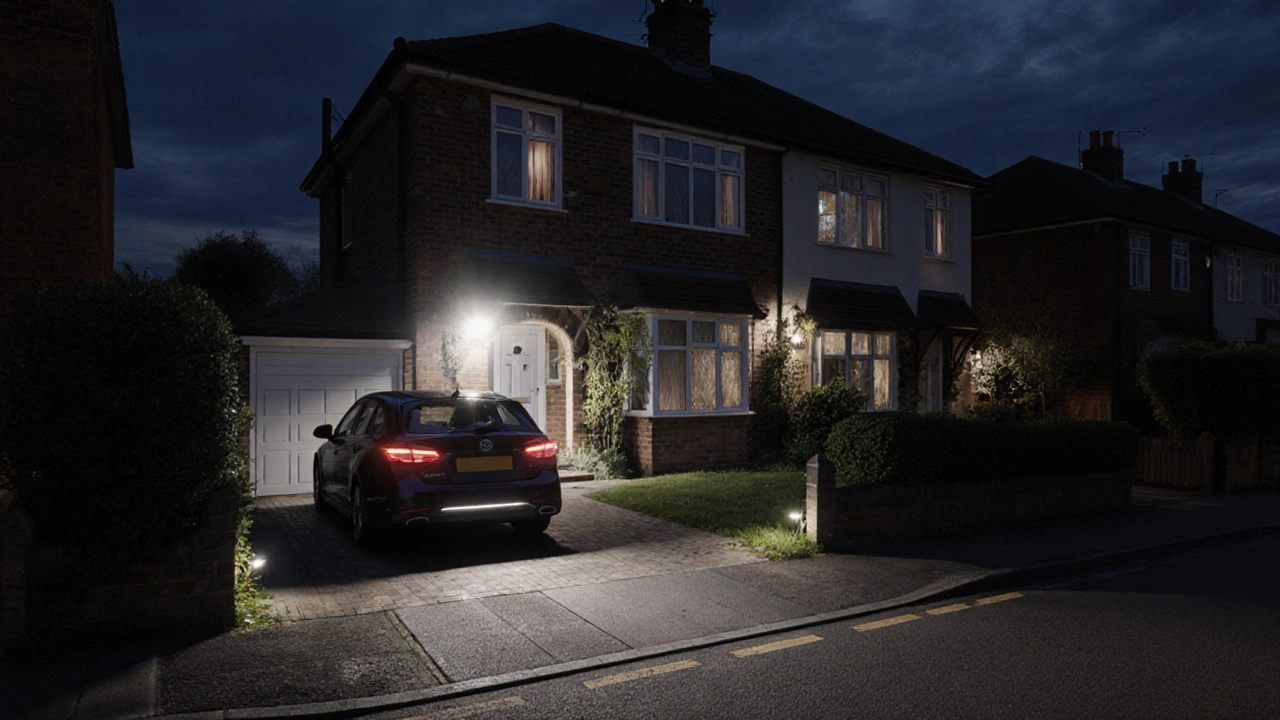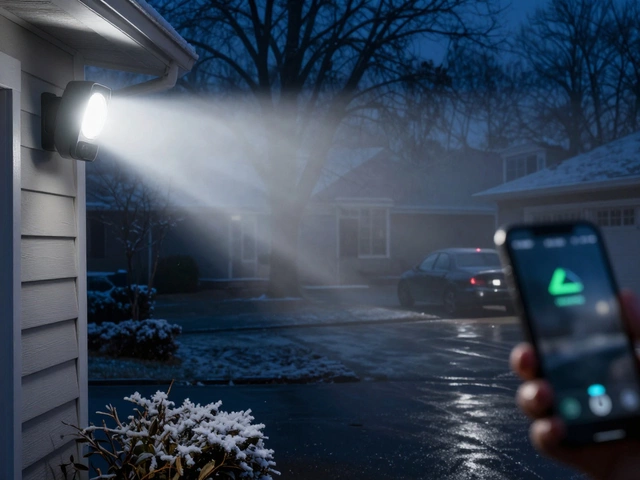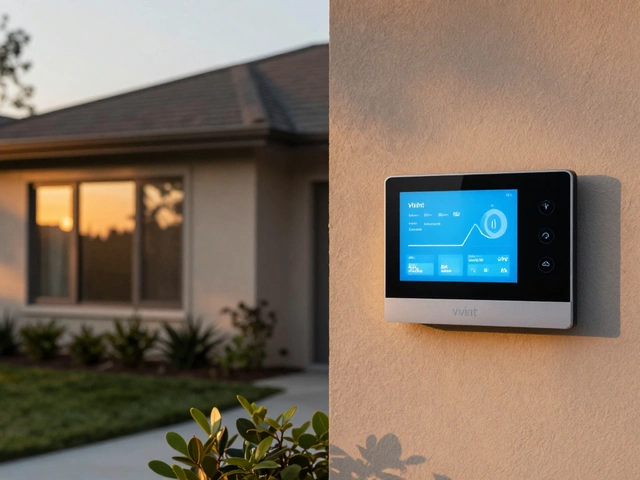Security Lighting Effectiveness Calculator
Calculate Your Security Impact
Enter your lighting configuration to estimate burglary deterrence and energy impact
Your Security Assessment
Estimated Burglary Deterrence
Energy Cost Impact
Based on 12-hour average usage
Recommendation
When it comes to protecting your home at night, Outdoor security lights are lighting fixtures installed around a property to deter intruders and improve visibility for residents and monitoring devices. The debate-should you keep them on all night or switch them off to save energy-has real safety implications.
The short answer: outdoor security lights left on during vulnerable hours are usually better, but timing, technology, and placement decide how much they actually help.
Why Light Matters for Security
Criminals prefer darkness because it hides their movements. Studies from the University of North Carolina’s Crime Prevention Research Center show a 30 % drop in burglary rates when neighborhoods install sufficient exterior lighting. Light increases the perceived risk for a would‑be intruder and gives you, your neighbors, and any cameras a clearer view.
Lights On vs. Off: What the Numbers Say
Data from the National Crime Prevention Council (NCPC) compared three lighting scenarios across 12 suburban districts:
- Full‑time on (24 h) - 28 % reduction in reported break‑ins.
- Timed on (dusk‑to‑dawn) - 22 % reduction.
- Always off - baseline.
The difference isn’t massive, but the consistent presence of light makes a noticeable deterrent. However, leaving lights on all night can raise electricity costs and create light‑pollution complaints, so many homeowners opt for smart timing.
Types of Outdoor Lighting and Their Security Impact
Not all lights work the same. Below are the most common options, each marked up the first time it appears.
Motion sensor lights are fixtures that activate when movement is detected, providing a burst of illumination exactly where it’s needed. They’re great for driveways and backyards because they surprise an intruder and alert neighbors.
Timer‑controlled lights are lights connected to a programmable schedule, typically on from sunset to sunrise. They give predictable coverage without constant energy draw.
LED floodlights are high‑intensity, wide‑angle lights that brighten large yard areas. Their brightness can eliminate shadows that hide tools or climbing equipment.
Smart lighting systems are networked bulbs or fixtures that can be controlled via phone apps, voice assistants, or automation rules. They let you switch lights on remotely or link them to a burglar alarm.
Photocell sensors are light‑sensing devices that turn lights on at a set lux level, usually at dusk. They’re a low‑cost way to ensure lights aren’t left on during daylight.
Each technology influences how and when the light is present, which directly affects its deterrent power.
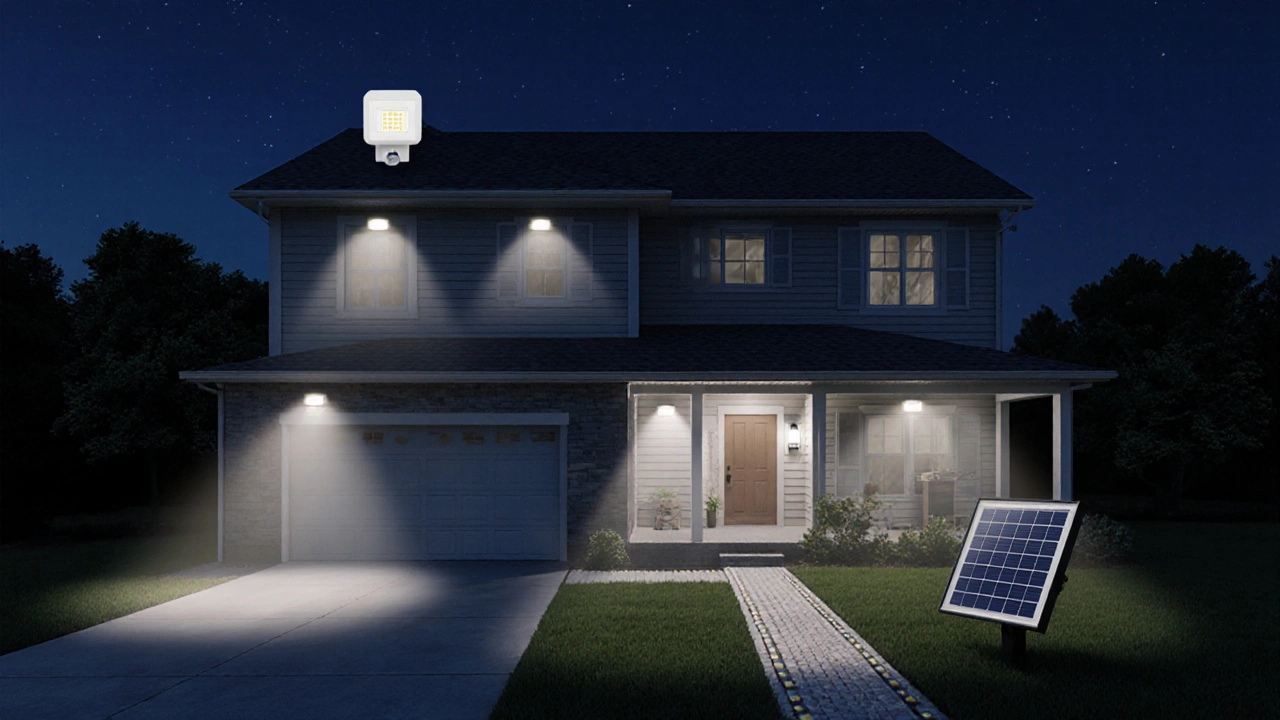
Designing an Effective Lighting Strategy
- Map vulnerable zones. Identify entry points-front door, back door, garage, windows near the ground, and any dark corners.
- Choose the right fixture for each zone. Use motion sensors for driveways, floodlights for large yards, and timed LEDs for pathways.
- Set appropriate levels. Aim for 10-20 lumens per square foot in high‑risk areas. Too dim won’t deter; too bright can create glare that hides faces.
- Integrate with other security tech. Pair lights with CCTV cameras so they automatically start recording when illumination spikes. Combine with a burglar alarm that triggers a flash or a smart‑light scene.
- Program smart schedules. If you have a home security system, set it to turn on extra lighting when the system arms at night.
- Test for shadows. Walk the property after dark; any dark spots are potential hideouts that need extra light.
Following these steps gives you a balanced approach-enough light to deter crime, but not wasteful energy.
Pros and Cons: Lights On vs Off
| Aspect | Lights On | Lights Off |
|---|---|---|
| Deterrence | High - visible deterrent 24/7 | Low - darkness invites intruders |
| Energy Cost | Higher - especially with incandescent | None |
| Light Pollution | Potential issue for neighbors | None |
| Integration with Sensors | Works best with motion or smart control | Limited benefit |
| Maintenance | Bulb life reduces with constant use | Longer bulb life |
Notice how “Lights On” wins on security but loses on cost and environmental impact. The sweet spot is usually a timed or sensor‑driven approach.
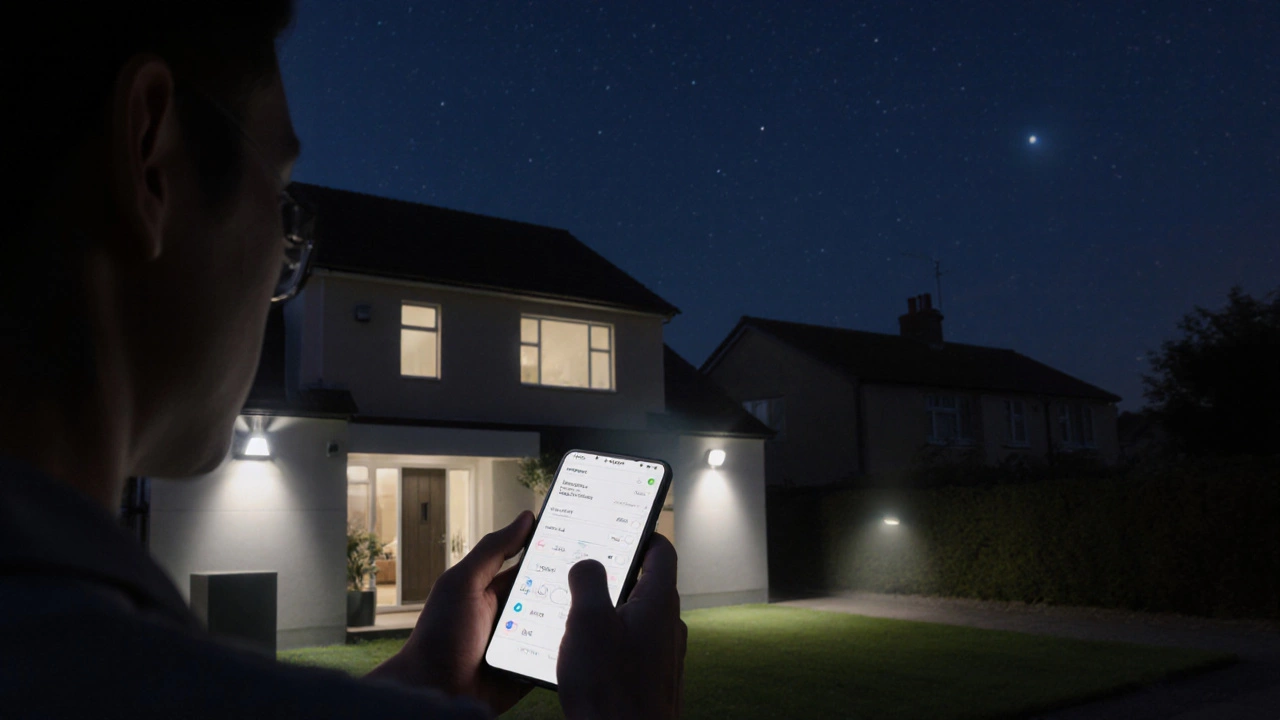
Common Myths and Mistakes
- Myth: “A single bright floodlight covers everything.” Reality: Over‑lighting creates glare and shadows; multiple lower‑intensity fixtures provide uniform coverage.
- Myth: “Leaving lights on all night is the safest.” Reality: Predictable lighting can be learned by repeat offenders; rotating patterns or motion‑triggered bursts are harder to game.
- Myth: “Solar lights are too weak for security.” Reality: Modern solar LEDs deliver up to 1,200 lumens and can be paired with motion sensors for effective use.
Quick Checklist Before You Flip the Switch
- Map all entry points and dark zones.
- Select fixture type for each zone (motion, timer, flood, smart).
- Install at a height of 8‑10 feet to reduce tampering.
- Set lumens: 10‑20 lux for pathways, 30‑40 lux for driveways.
- Connect to your home security system or app for remote control.
- Test at night-no shadows, no glare, no blind spots.
- Schedule regular bulb checks (LEDs last 25 000 h, but contacts can corrode).
Frequently Asked Questions
Do motion sensor lights waste more electricity than timed lights?
Not usually. Motion lights turn on only when needed, often for just a few seconds per trigger. A timer that stays on for 12 hours can consume more energy overall, especially if the bulbs are not LED.
Can I rely solely on lighting for home security?
Lighting is a strong deterrent, but it works best with locks, alarms, and cameras. A layered approach reduces chances of a break‑in succeeding.
What color temperature is best for security lighting?
Cool white (4,000‑5,000 K) mimics daylight and makes faces easier to recognize. Warm white can be soothing but may reduce clarity.
Are solar‑powered outdoor lights reliable in cloudy climates?
Modern solar panels store enough charge for several nights of low sunlight. Pair with a battery backup or a hybrid solar‑grid model for guaranteed uptime.
Should I dim my lights at night to avoid disturbing neighbors?
Yes. Dusk‑to‑dawn LEDs often have dimming options. Aim for 10‑15 % of full brightness on the street-facing side while keeping key zones brighter.
Choosing the right lighting setup isn’t about a single rule; it’s about matching technology to your property’s layout, budget, and local regulations. By understanding how light deters crime and by using modern sensors, you can keep your home safe without blowing your electricity bill.

